Airtable, a versatile and user-friendly database tool, has become a go-to solution for many web development businesses. Its flexibility and integration capabilities make it an ideal choice for managing projects, tracking progress, and collaborating with team members.
With this in mind, we've put together a guide all about Airtable. And in it, you'll discover how to leverage Airtable in your web development business to streamline processes and enhance productivity.
But first, what is this tool all about? Let's explore.
What is Airtable?
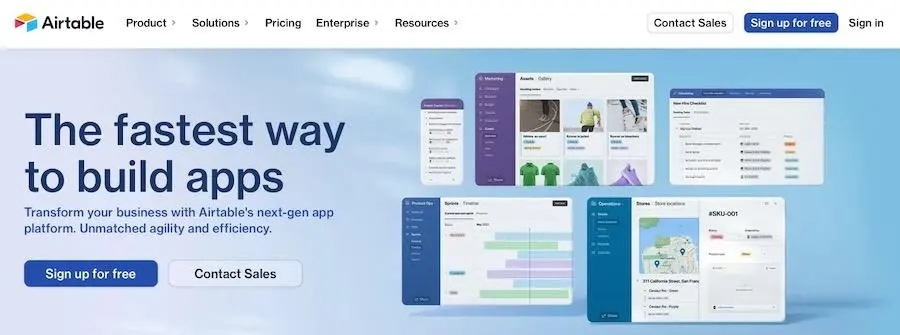
Airtable is more than just a database tool. It's a platform that brings together the best of spreadsheets and databases. Understanding its core components and unique features is essential to maximizing its potential in your web development business.
This cloud-based platform combines the functionality of a spreadsheet with the robustness of a database. Unlike traditional databases, it offers a visually appealing and user-friendly interface that makes data management a breeze.
Here's a deeper look into what makes Airtable special:
Cloud-Based: Accessible from anywhere with an internet connection, allowing for real-time collaboration.
User-Friendly Interface: Designed with ease of use in mind, making it accessible even to non-technical users.
Integration Capabilities: Connects with various tools and platforms, enhancing its functionality.
All of that is great but it's easier to understand a platform if you get a look at its features directly. So that's what we'll cover next.
Key Features
Airtable's features are what truly set it apart. Here's a detailed exploration:
1. Bases: Bases are individual databases where you can store and organize your data. Each base can be customized to fit the specific needs of a project or client.
2. Tables: Within bases, tables function like sheets in a spreadsheet. You can create multiple tables within a base to categorize different types of information.
3. Fields: Fields are the individual columns within a table. They can be customized to hold different types of data, such as text, numbers, dates, and more.
4. Views: Airtable allows you to create different views of your data, such as grid view, calendar view, or Kanban view. Each view offers unique ways to visualize and interact with your data.
5. Formulas and Automation: With support for formulas and automation, you can create custom workflows, calculations, and processes that align with your business needs.
6. Collaboration Tools: Share bases, tables, and views with team members and clients, allowing for seamless collaboration and communication.
Other noteworthy features include:
Airtable extensions

Preconfigured apps available on a marketplace that make getting started easier, connectable, and customizable.
Interface Designer
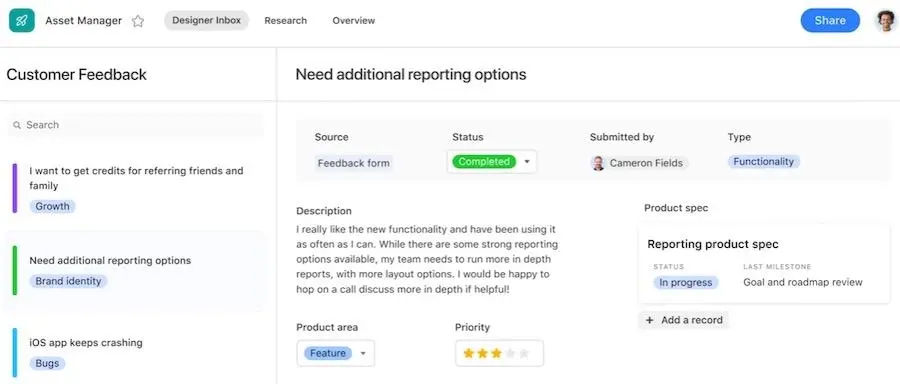
Turn your data into beautiful, actionable interfaces that you can customize to fit different workflows and audiences.
Enterprise-Grade Features
Administrative controls, granular permissions, and scalable architecture for enterprise-level usage.
Understanding these features is the foundation for leveraging Airtable effectively in your web development business.
Setting Up Airtable for Web Development
Setting up Airtable for your web development projects requires thoughtful planning and customization.
Here's a step-by-step guide to help you get started.
Creating a Base for Your Project
To get started, just follow this simple process:
1. Sign Up
If you haven't already, sign up for an Airtable account. Choose the plan that fits your needs, as different plans offer varying levels of features and support.
2. Create a Base
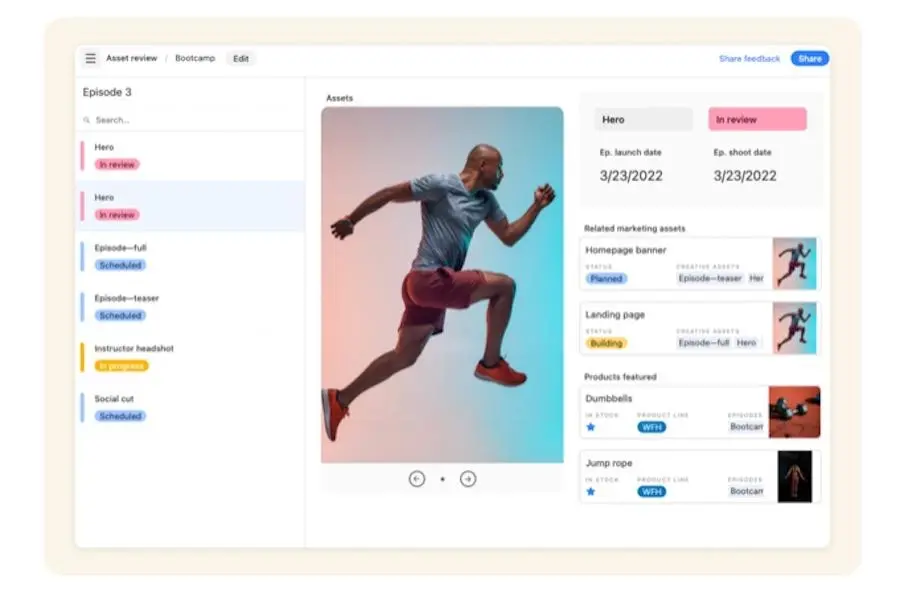
Start by creating a base. You can choose from various templates or start from scratch to create a base tailored to your project's needs.
3. Add Tables
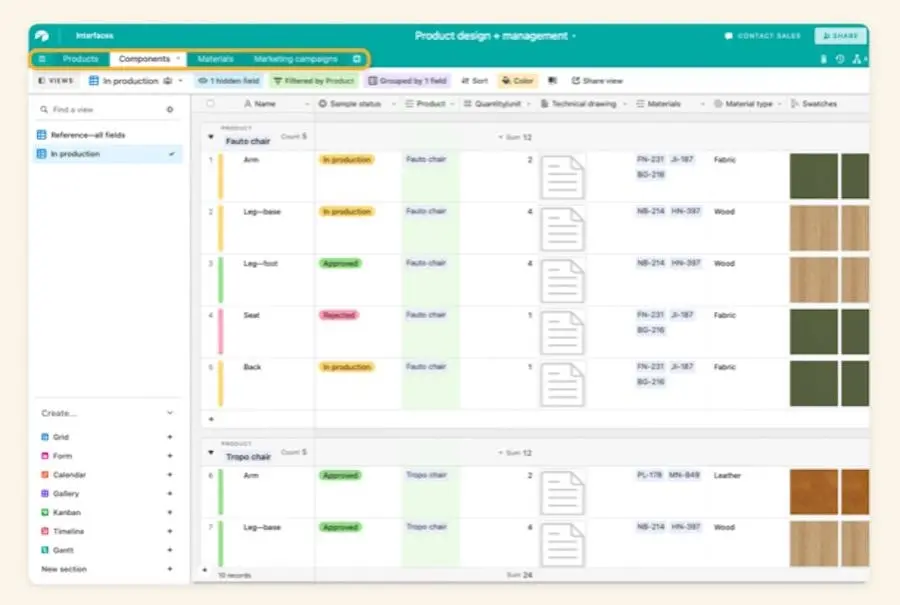
Create tables for different aspects of your project, such as tasks, milestones, clients, and team members. Think of tables as individual categories that hold related information.
4. Customize Fields
Within each table, customize fields to hold specific types of data. For example, you might have fields for task names, due dates, assignees, and status.
5. Import Data
If you have existing data in spreadsheets or other tools, you can easily import it into Airtable.
Customizing Views
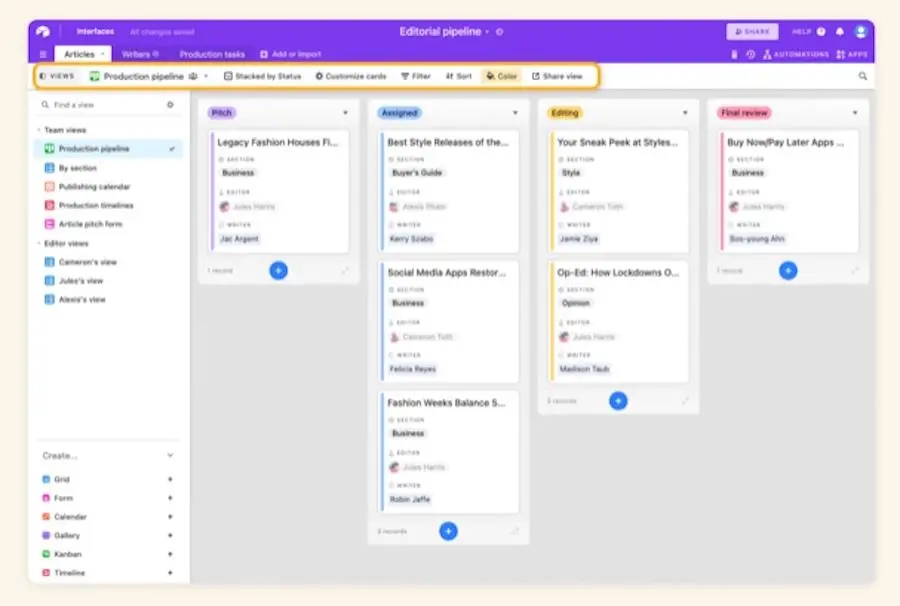
Airtable's views are a powerful feature that allows you to see your data in various ways.
Here's how to make the most of them:
Grid View: This traditional spreadsheet look is ideal for detailed data analysis. Customize columns, sort data, and apply filters to get the exact view you need.
Calendar View: Perfect for tracking deadlines and milestones, the calendar view allows you to see tasks and events in a monthly, weekly, or daily format.
Kanban View: Inspired by the Kanban methodology, this view is great for visualizing workflow stages. Organize tasks into columns representing different stages of your process.
Gallery View: If you're working with visual assets, the gallery view displays items as cards with images, making it easy to browse and organize.
Form View: Create custom forms that can be shared externally, allowing clients or team members to submit information directly into your base.
Customizing views helps you present data in a way that aligns with your project's needs, enhancing efficiency and decision-making.
Integrating with Other Tools
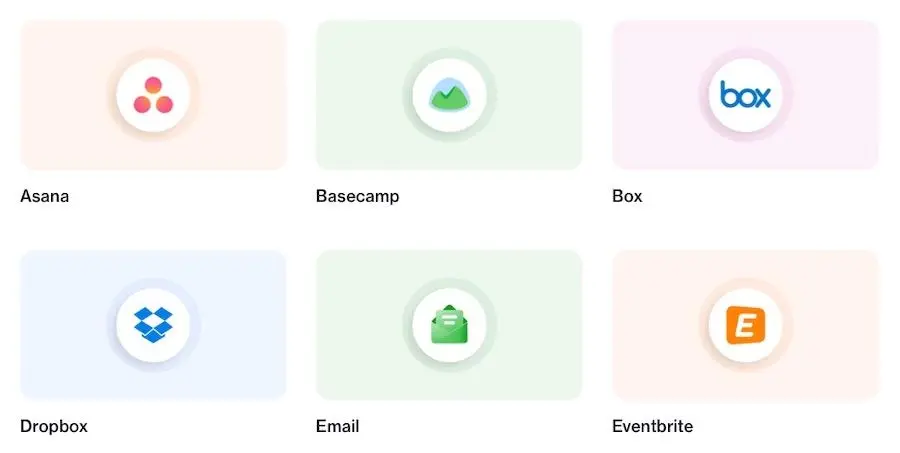
Integration is where Airtable truly shines. Here's how to connect it with other tools:
1. Choose Integrations: Identify the tools you want to integrate with Airtable. Consider your existing workflow and how Airtable can fit into it.
2. Use Zapier or Built-in Integrations: Airtable offers built-in integrations with popular tools like Slack, Trello, and Google Calendar. For others, you can use Zapier, a third-party integration platform.
3. Set Up Automation: Create automated workflows to streamline tasks. For example, you might set up an automation that sends a Slack message when a new task is assigned.
4. Test and Monitor: After setting up integrations, test them to ensure they're working as expected. Monitor them regularly to ensure smooth operation.
Integrating Airtable with other tools in your web development toolkit can significantly enhance efficiency and collaboration, creating a seamless and interconnected workflow.
Practical Applications in Web Development
Airtable's versatility makes it suitable for various applications in web development. Here's an in-depth look at how you can use it:
Project Management
Managing web development projects involves numerous moving parts. Airtable can help you streamline this process:
Task Tracking: Organize tasks, assign them to team members, and track progress. Use views to visualize tasks in different ways, such as by status or assignee.
Milestone Planning: Set and monitor key milestones, ensuring that your project stays on track. Use a calendar view to visualize deadlines and dependencies.
Collaboration: Collaborate with team members and clients by sharing views and comments. Real-time updates ensure everyone stays on the same page.
Reporting: Generate custom reports to analyze project performance, identify bottlenecks, and make informed decisions.
You can also use Airtable for managing clients, which we’ll discuss next.
Client Management
Managing client relationships is crucial in web development. Airtable can also assist you in this area:
Client Information: Store all client information, including contact details, project requirements, and communication history.
Feedback Tracking: Keep track of client feedback and revisions. Use comments and attachments to centralize all related information.
Client Portals: Create custom views that can be shared with clients, allowing them to see progress, provide feedback, and collaborate directly within Airtable.
Invoicing and Billing: Integrate with accounting tools to manage invoicing and billing directly from Airtable.
But that’s not all Airtable can be used for.
Resource Allocation
Efficient resource allocation is key to successful project delivery. Airtable can help with this as well:
Team Scheduling: Manage team schedules and availability. Use calendar view to see who's available when and avoid overbooking.
Budget Tracking: Monitor project budgets and expenses. Create custom fields to track different types of costs and generate reports to analyze spending.
Asset Management: Organize and manage digital assets such as images, documents, and code snippets. Use gallery view to browse visually.
Vendor Management: If you work with external vendors or freelancers, you can manage their information, contracts, and deliverables within Airtable.
These practical applications demonstrate Airtable's potential to transform various aspects of your web development business, from project management to client interaction.
Will Airtable Help Your Workflow?
Airtable offers a unique blend of simplicity and functionality that can transform the way you manage web development projects. From project management to client interaction, its features are designed to streamline processes and foster collaboration.
Hopefully this overview of its key features will help you decide if Airtable can play a role in how you run your web development business.
And as always, if you need reliable web hosting for your development projects, look no further than our web hosting plans here at Verpex, Our WordPress plans are great for blog and business websites, while our managed server plans are suitable for larger projects.
Frequently Asked Questions
How can I get assistance with my web development hosting account?
Our support team is available 24/7/365 to assist with your web development hosting account. You can contact us via live chat, email, or phone for any queries or concerns.
How does Verpex Web Development Hosting cater to developers' needs?
Verpex Web Development Hosting caters specifically to developers' needs by offering support for a wide range of programming languages, pre-installed development tools, and scalable resources to accommodate the growth of your project.
Is there a money-back guarantee for Verpex Web Development Hosting services?
Yes, Verpex Web Development Hosting offers a 45-day money-back guarantee, allowing you to try our services risk-free and assess if they meet your needs.
Can I host multiple web development projects on a single Verpex plan?
Yes, with Verpex Web Development Hosting, you can host multiple web development projects under a single plan, making it easy to manage your projects and optimize your resources.

Brenda Barron is a freelance writer and editor living in southern California. With over a decade of experience crafting prose for businesses of all sizes, she has a solid understanding of what it takes to capture a reader's attention.
View all posts by Brenda Barron




















